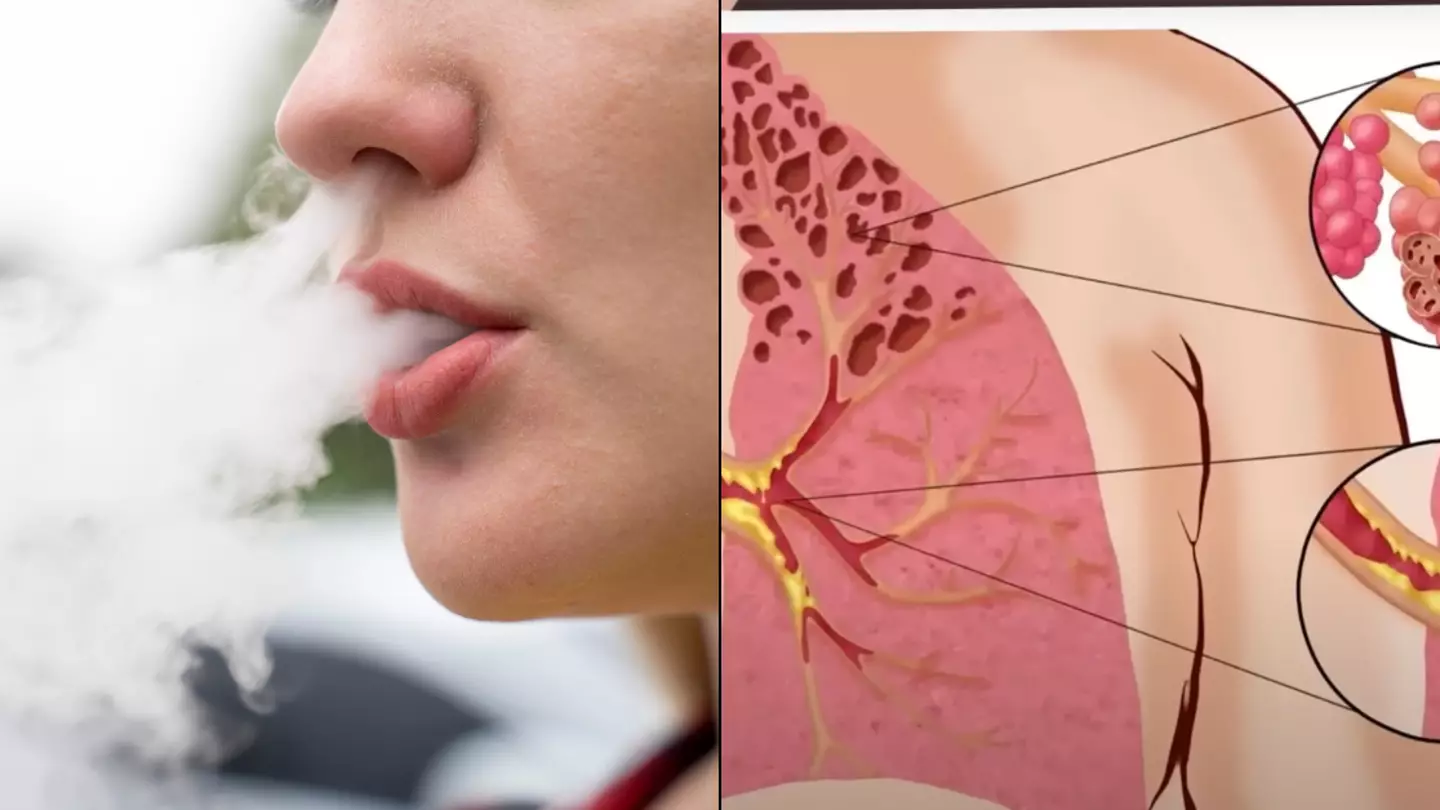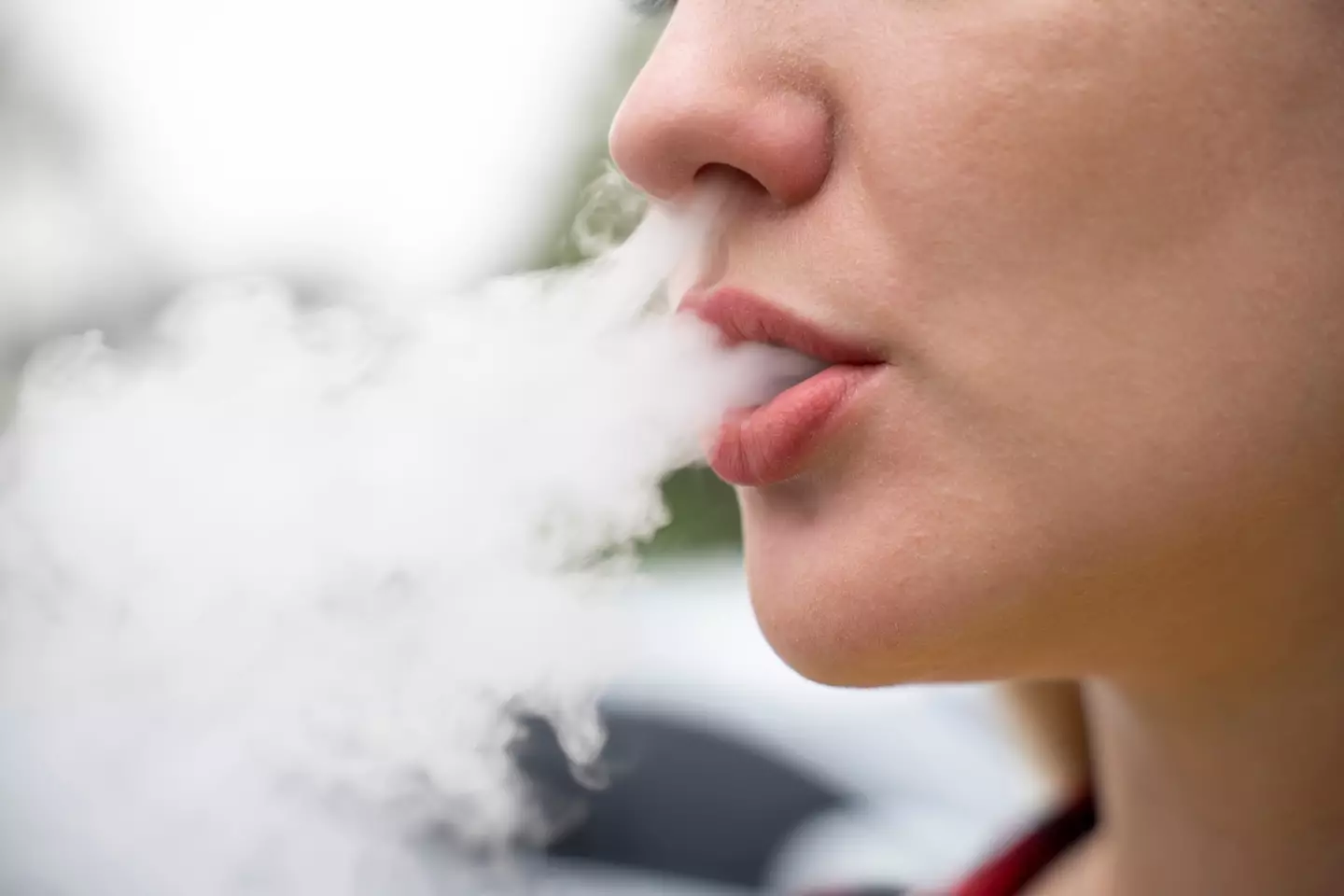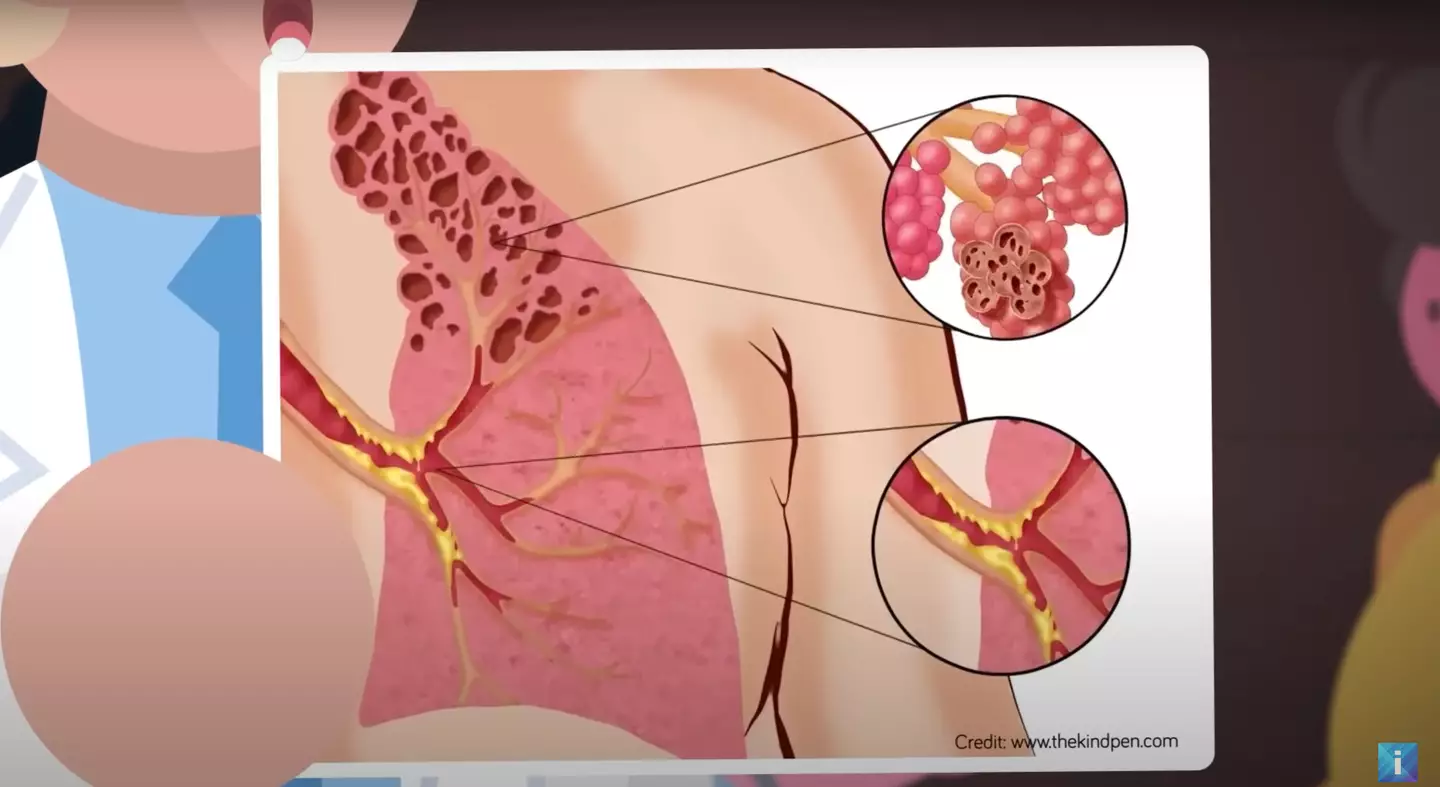
A simulation of what really happens in your body when your vape has revealed just how harmful it can be.
It's taken a while, but it looks like more people are becoming aware of how bad vaping can be for you, with authorities around the world putting measures in place to stop the epidemic from getting any further out of hand.
Keir Starmer and the UK government have vowed to ban cigarettes for all of those born in 2009 or after, and restrict the way that vapes are sold in shops to stop children from getting their hands on it.

Advert
Though these are steps in the right direction, it's worth knowing why vapes are bad for you, and seeing just how badly it can affect your body.
Most vapes consist of a mouthpiece, a heating element, a microprocessor, a battery, and a cartridge that contains e-liquid.
When the juice is drawn out of the cartridge by the heating element, it is vapourised and inhaled like cigarette smoke, though usually a lot sweeter.
Initially thought to be a 'healthier' alternative to smoking a ciggy, it turns out that there's a lot to worry about when it comes to sucking on the battery powered machines.
It's become a massive problem as back in 2019, the United States had an outbreak of over 1600 cases of unexplained lung injury, with 34 being fatal, and 92 percent of patients admitted that they had used black-market THC vape cartridges.
Advert
Now known as E-Cigarette or Vaping Associated Lung Injury (EVALI), it is caused by vitamin E acetate, a synthetic used in topical skin cream.
But this is just one of several chemicals that are in vape juices which have little restriction.
In isolation, vape juice ingredients don't look that bad, including things such as propylene glycol, which is common in food and medicine, or even vegetable glycerine, a food thickening agent, along with whatever else manufacturers want to chuck in.
There's so little regulation on these ingredients to this day, so the risk of two elements becoming toxic when vapourised together isn't out of the question.
Advert
Diacetyl is a common artificial flavouring compound that flavours coddww, fruity drunks, and adds a butter flavour to microwave popcorn.
Despite ingesting it, you do not want it in your lungs.
A simulation shows what happens if we regularly inhale Diacetyl in vapes, and it might be enough to put you off it if you're a regular vape user.
You might develop a chronic condition known as bronchiolitis obliterans, also known as 'popcorn lung' as it was first discovered in a popcorn factory as workers spent so much time with diacetyl that it became toxic.

Advert
The simulation shows the build up of mucus in the lungs and damaging the alveoli, which is the primary site of gas exchange between the blood and inhaled air.
Diacetyl is not illegal though, so it does still regularly make its way into vape juices regardless of flavour.
In fact, a 2015 study by the Environmental Health Perspectives revealed that out of 51 tested e-liquid flavours, 39 contained the chemical.
Medical professionals widely believe that vaping may be slightly better than smoking cigarettes, which are known to have over 600 chemicals in them and a higher nicotine level, but the more we look into vapes, the more than similarities show.
Essentially, if it's not air, it shouldn't be going into your lungs' cilia.
Advert
The cilia are hair-like structures in your lungs that move in wave patterns to keep out bacteria and other viruses away, so hat you can cough it out.
But smoking in numerous chemicals can have a 'paralytic effect' on the lung cilia, which takes weeks to heal, leaving your lungs exposed to infection.